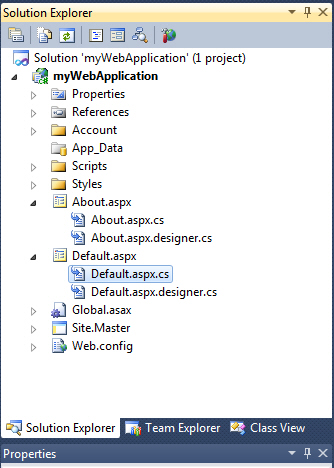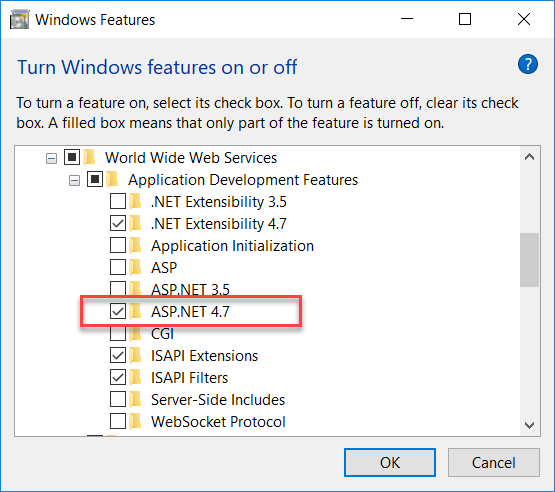
- Visual studio for mac publish to iis how to#
- Visual studio for mac publish to iis .dll#
- Visual studio for mac publish to iis install#
- Visual studio for mac publish to iis code#
- Visual studio for mac publish to iis windows#
NET Core assemblies and assemblies of your app including the Telerik ones. Now, let’s see what’s in the output folder:Ī bunch of dll files – all needed. Save the configuration and run the Publish button. After that click on Configuration settings and choose self-contained deployment mode and choose target runtime. and the "Pick a publish target" dialog box opens: Right-click on the project (not the solution) in Solution Explorer and select Publish. However, if you're using an earlier version please refer to this article from Microsoft.Īgain, I remind you that with SCD approach of deploying we need to create a profile for every platform, so you need to repeat the steps below for every platform you need to target!

I’ll use the VS 2019 official version (version above 15.7) and describe the steps in details. Note that there is difference in the approach depending on the version of Visual Studio. This is my preferred way! I <3 Visual Studio and its benefits. With several clicks I have prepared a functional desktop application for.
Visual studio for mac publish to iis install#
After you install Telerik components for WPF or WinForms they will appear in your Visual Studio like this: NET Core templates released with R2 2019 Release. However, this time I’ll use the brand new. There two ways to create deployment files for such an app – with the Command Prompt or with Visual Studio.Īs usual, I’ll use Telerik Visual Studio templates to build an app for demo purposes. Now, as I said, we will focus on the third approach and take a deep dive into how we can use it.
Visual studio for mac publish to iis how to#
If your app uses reflection be careful and read how to handle the case here. Typically, small tool-like console apps benefit the most as they tend to use fairly small subsets of the framework and are usually more amenable to trimming. Just set PublishTrimmed=true in your project. This can significantly reduce the size of some apps.
Visual studio for mac publish to iis code#
IL linker scans the IL of your application to detect which code is actually required, and then trims unused framework libraries. NET Core 3 Preview 6 it is possible to use Assembly Linker and significantly decrease the size of the app. NET Core as well as your app and its third-party dependencies However with.
Visual studio for mac publish to iis .dll#
dll file (such as app.dll), which is the actual application.
Visual studio for mac publish to iis windows#
SCDs include an executable (such as app.exe on Windows platforms for an application named app), which is a renamed version of the platform-specific. NET Core that opens up some great possibilities, and we will focus more on it in this post. Now let's talk more about the third approach: Self-Contained Deployment (SCD)

With the FDE approach your app can be run by calling the published executable without invoking the dotnet utility directly.NET Core app will run on in advance, while the second should be published separately for each target platform. The first one can be used for multiple platforms, you don't have to define the target operating systems as your.The first one outputs *.dll files, the second one *.exe files.NOTE! What are the main differences between FDD and FDE approach? NET Core is not part of the package, your app may not work or change its behavior based on the installed version of. NET Core installation, which reduces both disk space and memory usage on host systems. This leads us to common advantages and disadvantages: What are the Benefits of These Two Approaches?īenefits include a smaller size, and that multiple apps use the same. These two approaches have one major thing in common - they depend on the installed. Now, no matter whether the app is converted or completely new - it is time to continue with guidance on how to deploy it and bring the completed app to its users.NET Core 3 gives us three ways to deploy an app – and each has its benefits:įramework-Dependent Deployment (FDD) & Framework-Dependent Executables (FDE) NET Core apps and how to convert an existing WinForms and WPF app to. In a previous post I have talked about the benefits of. To achieve it, deployment is very important part of this process.

However, the real purpose of every app is to get to its end users. I know that the real fun is while an app is being developed, and we as developers are focused mainly on this part of creating an application. This post will help you deploy and bring your finished app to your users.NET Core 3 gives us three ways to deploy an app, and each has its benefits.


 0 kommentar(er)
0 kommentar(er)
